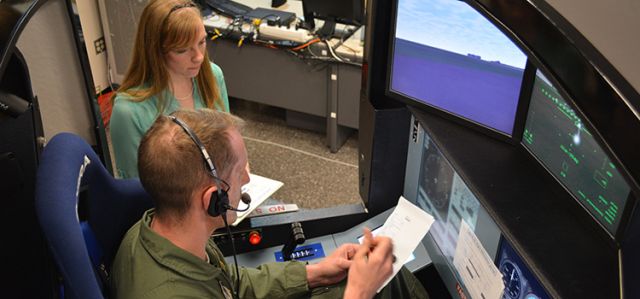Experiences Teaching Aircraft Design to Freshmen Non-Aerospace Engineering Students?
Document Type
Conference Paper
Publication Date
1-2005
Publication Source
43rd AIAA Aerospace Sciences Meeting and Exhibit
Abstract
Why teach aircraft design to freshmen, much less freshmen non-Aerospace engineering students? It can be somewhat intimidating for for freshmen who know nothing or little about aircraft or aircraft design to think that by the end of the semester they will have designed, built and flown an (Remote control) aircraft. It is at least as empowering as it Is intimidating for freshmen non-major to realize that without any prior knowledge of a multidisciplinary engineering domain, they can research, design, analyze. test, synthesize, work within the constraints of the resources available, and physically realize a product in one semester from nothing more than a set of (very carefully posed) requirements.
Part of the mission of the engineering First Year Experience (FYE) at the University of Dayton is to expose freshmen engineering students to as broad an array of engineering disciplines as possible. More specifically, the mission of the EGR101 Intro to Design class within the FYE is to expose engineering freshmen to hands-on engineering design exercises. This class is intended to balance the preceived (in the students' eye) absence of creativity and applications in the usual Calculus, Chemistry, and Physics courses required of engineering freshmen. The highly multidisciplinary nature of aircraft and aircraft systems design allows students to investigate in greater detail many aspects of a wide variety of engineering disciplines. This allows freshmen to identify with their preferred disciplines as they are exposed to them.
Teams were initially broken down into management, aerodynamics, materials and structures, flight dynamics (controls, and electronics), and propulsion groups. Once the research, design and analysis phases were completed, the boundaries of these domains and respective task distribution within them became less well defined within each of the teams.
Students were queried at even intervals several times throughout the semester on a variety of topics. Difficulties encountered included: roughly 1/4 of the class resisting the concept of a problem with a non-unique solution (throughout the semester), not having already been exposed to working in teams, difficulty learning MS Excel in a classroom environment, student schedules conflicting to the point where team meetings were difficult, and fresh high school graduates not used to having to work so hard outside of class on a problem without a solution in the back of the book.
A number of different techniques were implemented in an effort to address these issues. The process and results are discussed at length. Of the two teams in this class, one test flew their aircraft and the other aircraft was left almost completed (~95%) and was not test flown after running short on time. Regardless, 20 out of 23 students voluntarily braved the 30oF temperatures and showed up to view the test flight of the team that successfully completed construction.
ISBN/ISSN
978-1-62410-064-2
Copyright
Copyright © 2005, American Institute of Aeronautics and Astronautics
Publisher
American Institute of Aeronautics and Astronautics
Place of Publication
Reno, NV
eCommons Citation
Altman, Aaron, "Experiences Teaching Aircraft Design to Freshmen Non-Aerospace Engineering Students?" (2005). Mechanical and Aerospace Engineering Faculty Publications. 78.
https://ecommons.udayton.edu/mee_fac_pub/78
COinS




Comments
Permission documentation is on file.